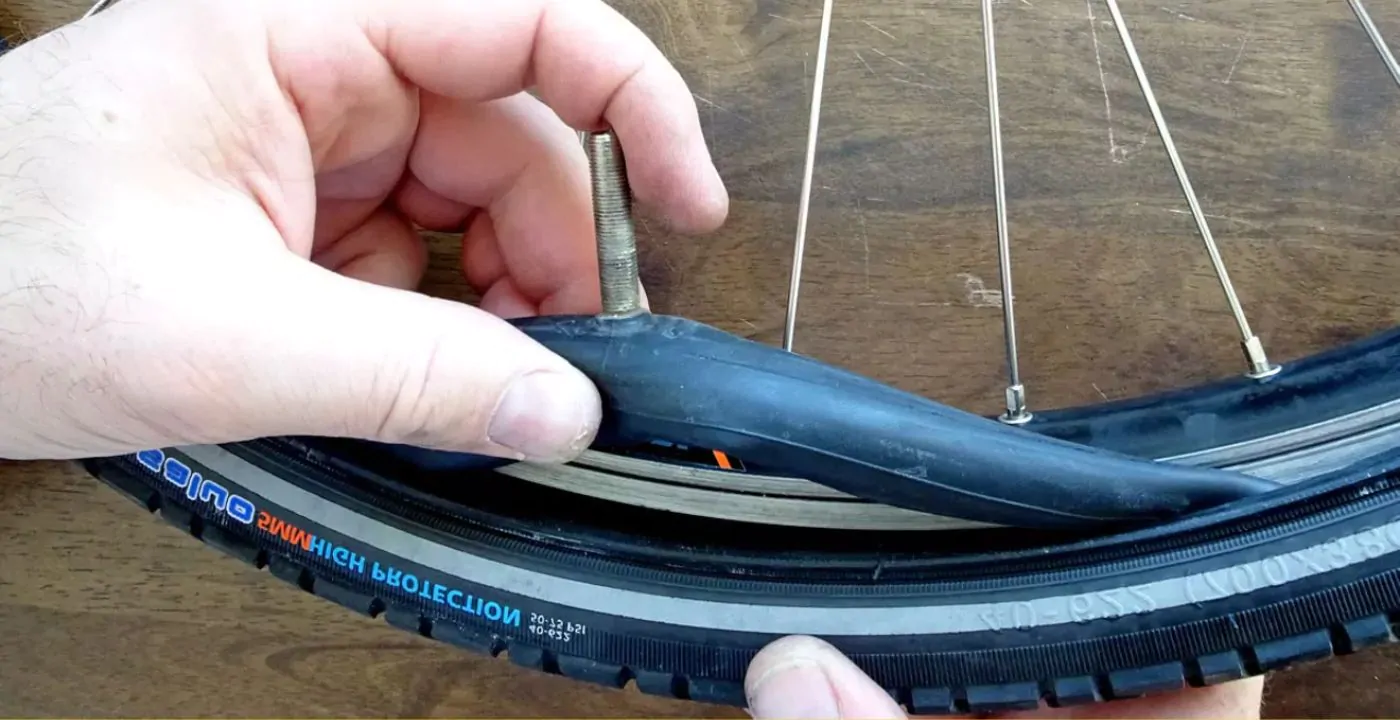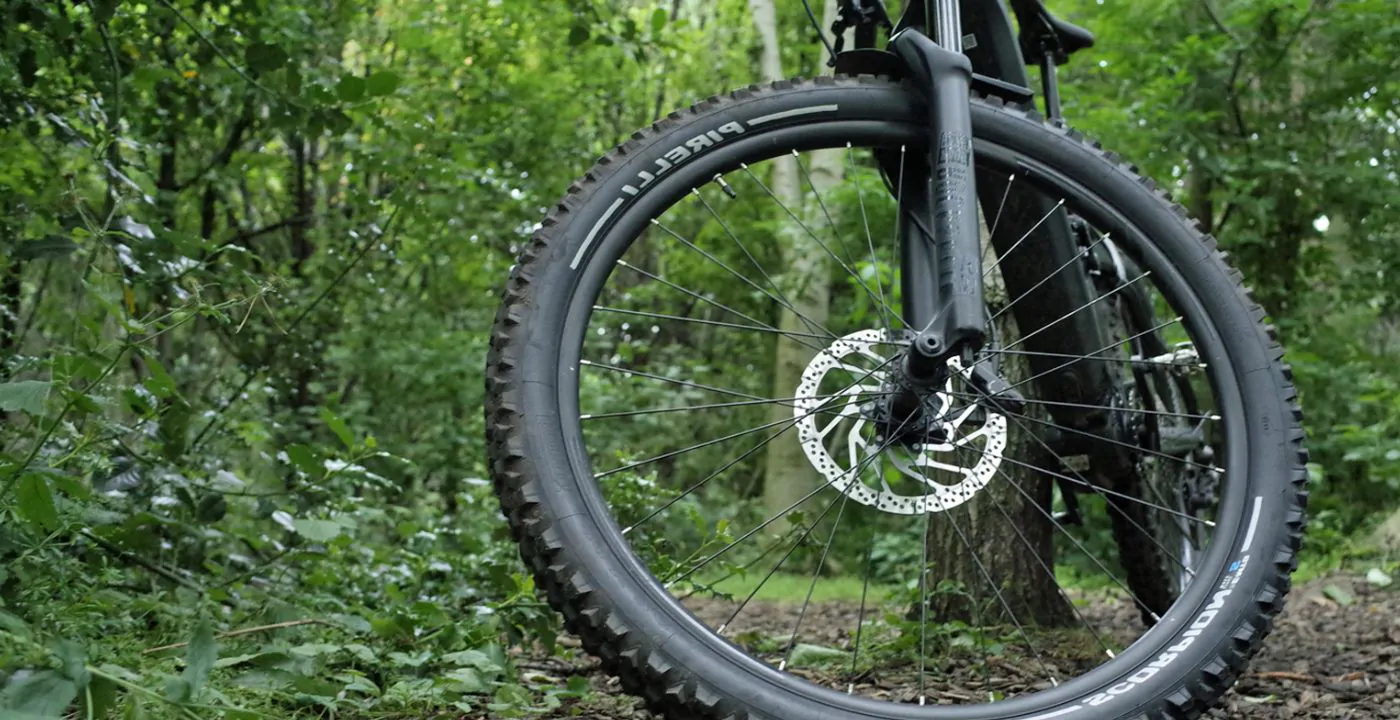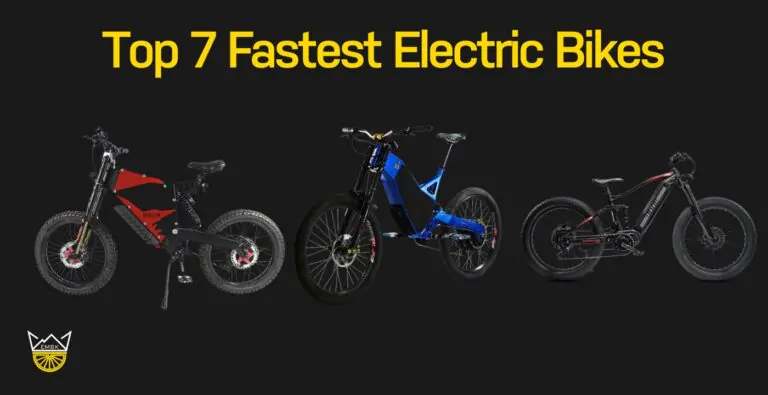
Keeping an eye on your e-bike tyre condition (and knowing how long your bike tyres last) is really important if you want to be riding smoothly and not encountering all sorts of problems along the way. So, changing e-bike tyres at the right time and knowing when to replace your e-bike tyres is key.
If you’re short on time, then one of the key things to know is that the typical e-bike tyre lasts between 1,000-3,000 miles. Gaps and holes, a loss of traction, cuts and blisters are some of things that are really important to keep an eye out for – along with watching out for the knobs on the tyre reducing in size by 50%.
After reading this, you should know exactly how long your e-bike tyres will realistically last, and also be able to identify the telltale signs that it’s time for them to be changed. First, then, let’s look at the topic of e-bike tyre mileage.
How Many Miles Can You Get Out of an e-Bike Tyre?
This isn’t an exact science and there are a lot of variables. It also differs between front and back tyres. Why, we hear you ask? Well, the e-bike’s battery powered motor is situated at the rear of the bike, which places more strain on the rear tyre – both in terms of weight, but also in terms of the amount of torque put through it.
The boost your bike gets from the electric battery all kicks through the back tyre – so naturally this adds an extra element of strain. The usual range your e-bike tyres will last is between 1,000 and 3,000 miles, but this all depends on the type or riding you’re doing, too.
If you’re hitting rough, off-road tracks on an e-MTB, then your tyre won’t last as long as a regular e-bike on a smooth cycle lane, on the road. Riding off-road will put a lot more straight through your e-bike tyre due to the number of sharp objects it may come into contact with.
Rather than putting a specific mileage clock on your tyres’ lifespan, it’s just as important (if not more so) to look out for signs of wear in your tyres that indicate they’ve reached the end of their use.
When Do e-Bike Tyres Need Changing?
To fully understand how long e-bike tyres last you need to know what to watch out for. Here are some of the key signs that those tyres need whipping off and replaced with new ones (it’s very similar to the signs on a regular bike).
What to Watch Out for:
Holes and Gaps

Any signs of holes or cuts down the side of your e-bike tyre is a big no no. That needs sorting straight away, otherwise you’re going to encounter real problems. Holes, cuts and gaps allow foreign objects to get inside a tyre, which means you’re completely open to getting flat tyres and you’ll be changing inner tubes on a regular basis.
Worn Knobs

The bobbles/knobs on the bottom of your tyre give you traction/grip. If they become smooth, then this is a problem, because you might find yourself slipping out on a wet surface or losing control on a sharp corner.
Traction
As we mentioned above, worn knobs can mean you lose traction on your e-bike. So, if you can’t remember what size the knobs were on the e-bike tyre when you bought it, then a good indication is feeling a particular change in your e-bike’s traction/grip. If your e-bike tyres aren’t gripping quite the same as they once were, then this is a big sign you need new e-bike tyres.
Blisters

If you see raised lumps on your e-bike tyre, which look a little like a skin blister, then this is another problem. It’s a clear sign tyres aren’t doing well and it will lead to further problems down the line – such as foreign objects getting inside and that will lead to punctures in the inner tube. Time to change.
Cracks

If your e-bike tyres have any signs of cracking, like cracked paint on a wall, then this is a problem. Like with the blisters and the gaps, this will allow objects to get inside, leading to punctures, but it will also create a lack of traction.
How Do e-Bike Tyres Compare to Regular Bike Tyres?
If you’re new to e-bikes, then alongside knowing their general mileage, it’s also worth knowing how they differ from regular bike tyres. The main differences are listed below.
E-Bike Tyres Key Features:
- Sturdier casing – this is to cope with a higher temperature and greater amount of friction of the road caused by the higher speeds.
- Thicker grooving – this allows for better grip and traction when you’re moving at those high speeds.
- Higher pressure – to accommodate the extra strain the tyre is put under by the weight and speeds.
- Thicker tread – to, again, cope with the extra strain, which gives extra puncture protection.
- Thicker rubber – to deal with the additional load the tyre is put under by the battery-powered speeds.
How to Change an e-Bike Tyre?
You now know what to watch out for on your e-bike, but understanding how to fix a flat tyre on an electric bike is a skill you definitely need to know, too. It may not be the quickest process initially, but after a few tries at it, you will start to get used to.
1. Firstly, turn the e-bike upside down on its handle bars, or place the bike on a stand if you have one.

2. Using the nuts and quick release levels on either side of the wheel, disconnect it from the bike frame.

3. You then need to let the air out the tyre, you can do this by using the valve.

4. This part can be a little tricky. Begin to take the rubber tyre off the rim, by putting pressure on the bead where the two connect. Initially begin in one place and work your way around the tyre until it’s all off on one side.

5. Now it’s loose, you may be able to get the e-bike tyre off the rim using your hand, some might be harder and you may need to use tyre levers to ease it off the rim.

6. You then need to get the inner tube out of the rubber tyre. This is an easy one and will just slip out. Once you’ve got the inner tube out then the tyre should easily come off the rim too.

7. So, that’s the old tyre off and now you need to get the new tyre on. Firstly, place the new rubber tyre around the edge of the rim. You can do this with your hands, placing the bead into one side of the rim.

8. Now you’ve got one side of the tyre back on the rim you can place your new inner tube inside, doing the reverse process of the initial part of step 6.

9. This is one of the trickiest and most labour intensive parts of the whole process. Now, the inner tube is in you need to prise the other side of tyre onto the rim of the e-bike. You won’t be able to get the whole job done without using your tyre levers. Start re-beading the tyre with your hand and when it becomes too tough, switch to using the tyre levels. After a little bit of fiddling the tyre should slip nicely on to the rim.

10. Once the tyre is neatly back on the rim and beaded in properly, you can then place the tyre back on the bike. This is simply the reverse process of Step 1.

11. You can then use your bike pump to pump up the tyre.

Do You Need to Change Your e-Bike Tyres Depending On the Weather or Seasons?
A lot of tyre and bike manufacturers these days offer all-weather tyres as standard, particularly on e-bikes. Unfortunately, there isn’t a plethora of specialist winter tyres on the market, however for most conditions an all-weather e-bike tyre will be spot on for the dry, cold and wet, etc.
This all depends on the style and type of riding you’re doing, of course. If you’re heading out into thick snow then most e-bikes will struggle, even e-mountain bikes. That’s unless you’re on a specialist fat-bike, which features super-thick tyres to cope with extreme conditions.
But if we’re just talking about a standard e-bike, for daily commutes, weekend rides and largely on pavement or roads, then your all-weather tyres will do the job.
Final Thoughts
Hopefully, having read this, you’ll have a better understanding of just how long your e-bike tyres will last. Be sure to check out some of our other e-bike buyer guides and blog posts to get other useful tips and tricks to take out with you on the trails!



